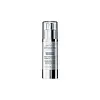What's inside
What's inside
 Key Ingredients
Key Ingredients

 Benefits
Benefits

 Concerns
Concerns

 Ingredients Side-by-side
Ingredients Side-by-side

Water
Skin ConditioningGlycerin
HumectantIsononyl Isononanoate
EmollientPropanediol
SolventLimnanthes Alba Seed Oil
Skin ConditioningXylose
Humectant1,2-Hexanediol
Skin ConditioningCellulose
AbsorbentDipalmitoyl Hydroxyproline
Skin ConditioningC20-22 Alkyl Phosphate
EmulsifyingC20-22 Alcohols
Emulsion StabilisingCetearyl Alcohol
EmollientCaprylic/Capric Triglyceride
MaskingCaprylyl Glycol
EmollientPolyacrylate Crosspolymer-6
Emulsion StabilisingParfum
MaskingSodium Acetylated Hyaluronate
HumectantCoco-Glucoside
CleansingXanthan Gum
EmulsifyingPentaerythrityl Tetra-Di-T-Butyl Hydroxyhydrocinnamate
AntioxidantSodium Hydroxide
BufferingAdenosine
Skin ConditioningSodium Citrate
BufferingSodium Chloride
MaskingCitric Acid
BufferingAminoethanesulfinic Acid
AntioxidantCarnosine
Skin ConditioningPotassium Chloride
Sodium Bicarbonate
AbrasiveDisodium Phosphate
BufferingTocopherol
AntioxidantMagnesium Sulfate
Micrococcus Lysate
Skin ConditioningPotassium Phosphate
BufferingCalcium Chloride
AstringentWater, Glycerin, Isononyl Isononanoate, Propanediol, Limnanthes Alba Seed Oil, Xylose, 1,2-Hexanediol, Cellulose, Dipalmitoyl Hydroxyproline, C20-22 Alkyl Phosphate, C20-22 Alcohols, Cetearyl Alcohol, Caprylic/Capric Triglyceride, Caprylyl Glycol, Polyacrylate Crosspolymer-6, Parfum, Sodium Acetylated Hyaluronate, Coco-Glucoside, Xanthan Gum, Pentaerythrityl Tetra-Di-T-Butyl Hydroxyhydrocinnamate, Sodium Hydroxide, Adenosine, Sodium Citrate, Sodium Chloride, Citric Acid, Aminoethanesulfinic Acid, Carnosine, Potassium Chloride, Sodium Bicarbonate, Disodium Phosphate, Tocopherol, Magnesium Sulfate, Micrococcus Lysate, Potassium Phosphate, Calcium Chloride
Water
Skin ConditioningGlycerin
HumectantDimethicone
EmollientCaprylic/Capric Triglyceride
MaskingSodium Polyacrylate
AbsorbentTocopheryl Acetate
AntioxidantMannitol
HumectantPropylene Glycol
HumectantCyclopentasiloxane
EmollientPhenoxyethanol
PreservativeButylene Glycol
HumectantChlorphenesin
AntimicrobialFomes Officinalis Extract
Skin ProtectingTrideceth-6
EmulsifyingCreatine
Skin ConditioningDisodium EDTA
Sodium Hyaluronate
HumectantLaminaria Ochroleuca Extract
Skin ConditioningPEG/PPG-18/18 Dimethicone
EmulsifyingSodium Hydroxide
BufferingLaminaria Saccharina Extract
Skin ProtectingRhamnose
HumectantCarnosine
Skin ConditioningDisodium Adenosine Triphosphate
Skin ConditioningMethylparaben
PreservativeLaminaria Digitata Extract
Skin ProtectingAlcohol
AntimicrobialPEG-40 Hydrogenated Castor Oil
EmulsifyingAcetyl Tetrapeptide-9
Skin ConditioningPolysorbate 80
EmulsifyingPlankton Extract
Skin ConditioningPropylparaben
PreservativeLecithin
EmollientPentylene Glycol
Skin ConditioningSuperoxide Dismutase
AntioxidantTromethamine
BufferingSoy Isoflavones
Skin ConditioningWater, Glycerin, Dimethicone, Caprylic/Capric Triglyceride, Sodium Polyacrylate, Tocopheryl Acetate, Mannitol, Propylene Glycol, Cyclopentasiloxane, Phenoxyethanol, Butylene Glycol, Chlorphenesin, Fomes Officinalis Extract, Trideceth-6, Creatine, Disodium EDTA, Sodium Hyaluronate, Laminaria Ochroleuca Extract, PEG/PPG-18/18 Dimethicone, Sodium Hydroxide, Laminaria Saccharina Extract, Rhamnose, Carnosine, Disodium Adenosine Triphosphate, Methylparaben, Laminaria Digitata Extract, Alcohol, PEG-40 Hydrogenated Castor Oil, Acetyl Tetrapeptide-9, Polysorbate 80, Plankton Extract, Propylparaben, Lecithin, Pentylene Glycol, Superoxide Dismutase, Tromethamine, Soy Isoflavones
Ingredients Explained
These ingredients are found in both products.
Ingredients higher up in an ingredient list are typically present in a larger amount.
This ingredient is an emollient, solvent, and texture enhancer. It is considered a skin-softener by helping the skin prevent moisture loss.
It helps thicken a product's formula and makes it easier to spread by dissolving clumping compounds.
Caprylic Triglyceride is made by combining glycerin with coconut oil, forming a clear liquid.
While there is an assumption Caprylic Triglyceride can clog pores due to it being derived from coconut oil, there is no research supporting this.
Learn more about Caprylic/Capric TriglycerideCarnosine is a dipeptide made from two amino acids.
This ingredient helps:
Glycation is the process of sugars binding to and damaging proteins. Too much sugar in our skin can lead to damaged collagen, contributing to factors of aging.
Carnosine is water-soluble and is not able to travel deeper layers of skin. This leads to some doubt about whether it can boost collagen in skin, since collagen is located in the deeper layers of skin.
Fun fact: Carnosine can be naturally found in our muscles and brain.
Learn more about CarnosineGlycerin is already naturally found in your skin. It helps moisturize and protect your skin.
A study from 2016 found glycerin to be more effective as a humectant than AHAs and hyaluronic acid.
As a humectant, it helps the skin stay hydrated by pulling moisture to your skin. The low molecular weight of glycerin allows it to pull moisture into the deeper layers of your skin.
Hydrated skin improves your skin barrier; Your skin barrier helps protect against irritants and bacteria.
Glycerin has also been found to have antimicrobial and antiviral properties. Due to these properties, glycerin is often used in wound and burn treatments.
In cosmetics, glycerin is usually derived from plants such as soybean or palm. However, it can also be sourced from animals, such as tallow or animal fat.
This ingredient is organic, colorless, odorless, and non-toxic.
Glycerin is the name for this ingredient in American English. British English uses Glycerol/Glycerine.
Learn more about GlycerinSodium Hydroxide is also known as lye or caustic soda. It is used to adjust the pH of products; many ingredients require a specific pH to be effective.
In small amounts, sodium hydroxide is considered safe to use. However, large amounts may cause chemical burns due to its high alkaline.
Your skin has a natural pH and acid mantle. This acid mantle helps prevent harmful bacteria from breaking through. The acid mantle also helps keep your skin hydrated.
"Alkaline" refers to a high pH level. A low pH level would be considered acidic.
Learn more about Sodium HydroxideWater. It's the most common cosmetic ingredient of all. You'll usually see it at the top of ingredient lists, meaning that it makes up the largest part of the product.
So why is it so popular? Water most often acts as a solvent - this means that it helps dissolve other ingredients into the formulation.
You'll also recognize water as that liquid we all need to stay alive. If you see this, drink a glass of water. Stay hydrated!
Learn more about Water